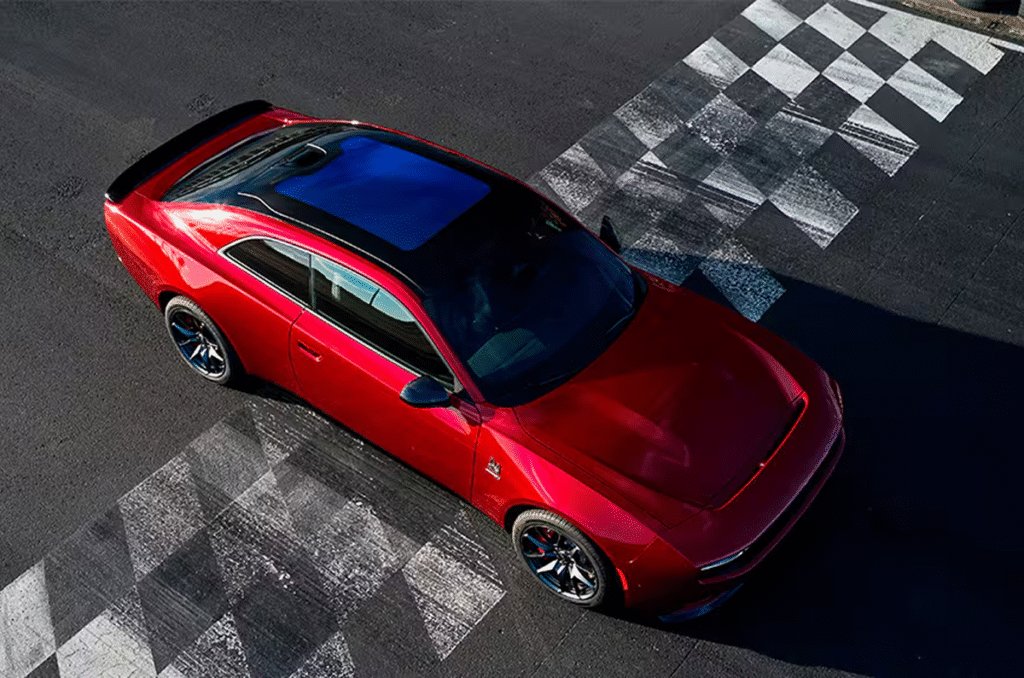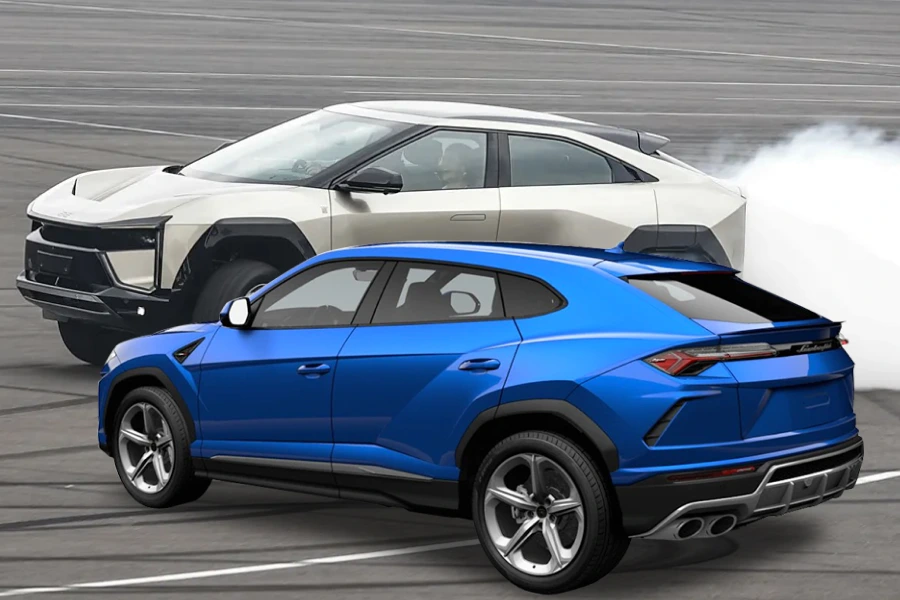Charger Daytona EV is getting affected by global politics. The U.S. government recently imposed a 25% tariff on vehicles imported from Canada—a move meant to protect American jobs but one that backfired for Dodge.
Why? Because the 2024 Dodge Charger Daytona EV is built in Windsor, Ontario, just across the border from Detroit. That means every electric Charger shipped to the U.S. now gets hit with a 25% price hike—adding thousands of dollars to its cost.
This made the Charger Daytona EV too expensive compared to rivals like Tesla and Ford, which build their EVs in the U.S. and avoid the tariff.

Dodge’s Big Decision: Delay the Four-Door EV and Cut the Cheapest Trim
Facing slow sales and higher costs, Dodge had to make tough choices:
- Delay the Four-Door EV – Originally set for early 2025, the more practical four-door version is now pushed to late 2025 (as a 2026 model).
- Kill the R/T Trim – The cheapest Daytona EV trim (starting at $61,590) was selling poorly, so Dodge dropped it entirely for 2026. Now, only the high-performance Scat Pack (starting at $73,190) remains.
- Push Gas Cars First – Dodge is now focusing on its gas-powered Charger Sixpack (with a twin-turbo Hurricane engine), which won’t be hit by tariffs and could be cheaper than the EV.
What This Means for Buyers
- Higher Prices – The tariff means the Daytona EV will likely cost more than expected.
- Fewer Choices – No more budget-friendly R/T model, only the expensive Scat Pack.
- Longer Wait – If you wanted the four-door EV, you’ll have to wait until late 2025.
Dodge CEO Matt McAlear admitted the company needs to “assess the effects of U.S. tariff policies” before moving forward. With the Windsor plant facing these new trade barriers, Dodge had to rethink its entire Charger strategy.
Is Anyone Buying Electric Muscle Cars?
The Charger Daytona EV was supposed to be a revolutionary electric muscle car, but early reactions have been mixed:
- “Fake Engine Noise” Backlash – Dodge’s Fratzonic Exhaust—a speaker system that mimics a roaring V8—has been mocked by critics as gimmicky and unnecessary in an EV.
- Range Anxiety – At 255 miles per charge, the Daytona falls short of competitors (Tesla’s Model 3 Long Range gets 333 miles). For a performance car, that’s a tough sell.
- Handling Complaints – Reviewers say the heavy battery pack makes the Daytona feel less agile than gas-powered muscle cars.
Dodge bet big on EV enthusiasts wanting old-school muscle car vibes, but so far, demand has been weaker than expected.
Too Many EVs, Not Enough Buyers
Dodge dealerships are already slashing prices on 2025 Charger Daytona EVs—some offering $13,500 discounts—just to clear inventory. Here are the insights:
- Overestimated Demand – Dodge thought the EV muscle car would fly off lots, but buyers seem hesitant.
- Gas Models Still Rule – Many muscle car fans would rather wait for the Hurricane I-6-powered Charger Sixpack than gamble on an untested EV.
- A Warning for Other Automakers – If even Dodge, a brand built on performance, can’t sell its EV easily, it raises questions about whether traditional car buyers are ready to go electric.

